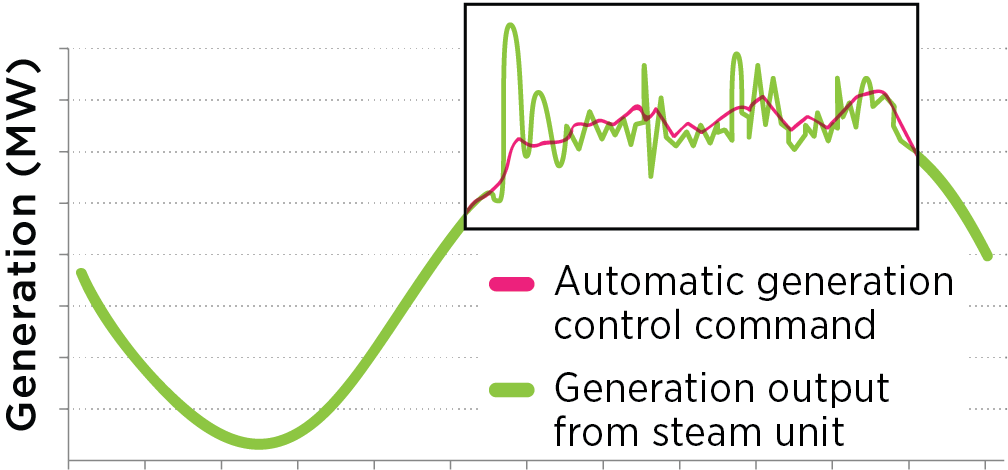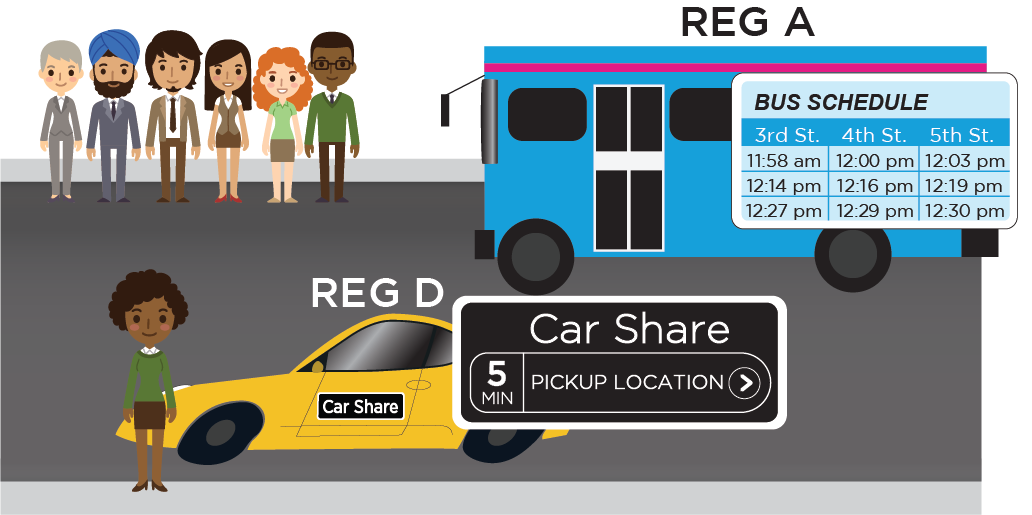Regulation Market
As an ancillary services product, regulation provides market-based compensation to resources that have the ability to adjust output or consumption in response to an automated signal.
Regulation is a reliability product that corrects for short-term changes in electricity use that might affect the stability of the power system. In technical terms, the main goal of regulation is to keep the system’s area control error, also called ACE, within acceptable bounds. ACE is the difference between scheduled and actual electrical generation, accounting for variations in the system’s frequency.
Regulation helps match generation and demand to keep the grid functioning normally by:
- Maintaining a system frequency of 60 Hertz
- Tracking moment-to-moment fluctuations in customer electricity use
- Correcting for unintended fluctuations in generation (such as a large generating unit disconnecting from the system)
- Managing differences between forecasted or scheduled power flow and actual power flow on the system

|
| This image illustrates the fluctuations in energy use that can happen in a matter of seconds. Regulation helps stabilize the system instantaneously to balance this supply and demand mismatch. (This is a conceptual image only and not an actual representation of a regulation signal.) |
As an ancillary services product, regulation provides market-based compensation to resources that have the ability to adjust output or consumption in response to an automated signal.
Some resources that currently participate in the PJM Regulation Market are:
PJM generates two different types of automated signals that Regulation Market resources can follow.
The Regulation D signal is a fast, dynamic signal that requires resources to respond almost instantaneously.
Regulation A is a slower signal that is meant to recover larger, longer fluctuations in system conditions.
These two signals communicate with each other and work together to match the system need for regulation.

Think of Regulation A like regularly scheduled city bus service. A bus can transport large numbers of people, but the speed of transport from place to place is generally slower and steadier because of the stops on the schedule. By contrast, think of Regulation D like a car share – a person may call for a car if they need to get somewhere quickly. Both buses and car shares help to meet the demand for transportation, but at different speeds and volumes.
Regulation resources follow either the Regulation A or the Regulation D signal, depending on their characteristics and capabilities. As system conditions change throughout the day, different quantities of each of these resources are needed at any given time.
Evolving Technology
One area of fast-growing technology that could participate in the Regulation Market is distributed energy resources, or resources that produce the electricity at or near the point where it is used, such as wind turbines, photovoltaic arrays and fuel cells.
These resources could work together with electric storage devices like batteries and flywheels to function as microgrids, which can interconnect to a larger system or operate as an “island.” PJM is working with industry leaders as this technology evolves, and exploring ways to efficiently and economically integrate distributed energy resources into the PJM markets and operations.